A Bountiful Arrangement
Perhaps the most outright visually dazzling painting hanging in The Frick Art Museum is this magnificent still life by Jan van Os. The ambitious and bountiful arrangement of fruits, flowers, flora, fauna, textures, and rich coloration is a fine example of Netherlandish still-life painting in its ultimate, most dramatic flowering. And van Os was all of 25 when he painted it.
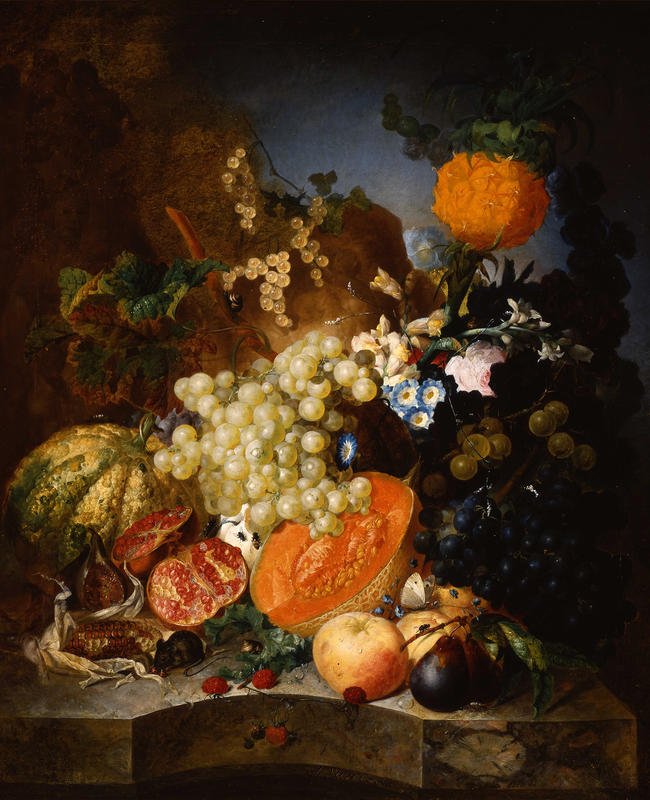
Still-life painting began developing as a genre during the Renaissance and experienced its golden age in the 17th-century Netherlands, largely as an outgrowth of the Protestant Reformation. Protestants considered depictions of the saints and biblical scenes idolatrous, and preferred their churches to have plain white walls. Dutch painters could not rely on hefty commissions from church or state. Fortunately, painting was considered appropriate for decorative or didactic purposes in the home, and secular painting intended for both upper- and middle-classes flourished.
Van Os is that rare artist whose popularity has remained consistent since his own time. He is known for his use of color (often he uses a lighter-keyed palette than is represented in this piece) and unconventional compositions. Earlier examples of Dutch still-life painting are known for their highly-coded symbolism—usually alluding to subjects of mortality and moderation. By the time of van Os, when the Baroque began to give way to the Rococo sensibility, still-life painting was more overtly decorative and spectacular.
Although van Os, achieved fame and financial success at a relatively young age and his paintings are well-documented, relatively little is known about his personal life. He was born in Middleharnis in 1744, and died in The Hague in 1808. He began his career painting seascapes, and exhibited regularly in London from 1773 until his death. Van Os founded his own dynasty of painters—his sons, Pieter Gerardus and Georgieus Jacobus Johannes were both successful artists. His daughter Maria Margaretha van Os was also known for her fruit and flower paintings and his grandson Pieter Frederik van Os was known for his landscapes with horses and cattle.
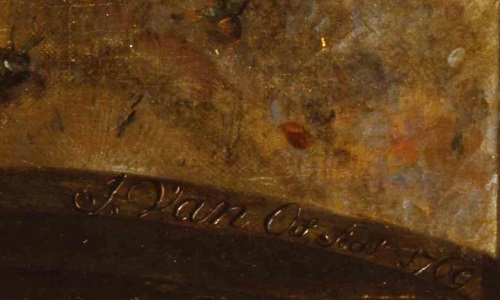
The Frick piece is dated, which is rather rare in van Os’ oeuvre. You can see the signature and date at the center, beneath the marble plinth: J. Van Os Fecit 1769. Henry Clay Frick purchased the painting February 5, 1896. It is considered to be his first purchase of an “old master.” Prior to this, Frick’s collecting had been primarily focused on works of early 19th-century and contemporary American and European artists. It was hung in the breakfast room at Clayton with two other still-lifes (which remain in the house) in the early years of the twentieth century.
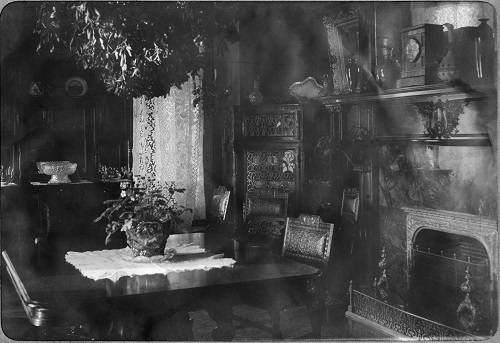
The Breakfast Room at Clayton. Photo courtesy The Frick Collection/Frick Art Reference Library Archives
Typically, van Os’ arrangements show little regard for natural laws of gravity or illumination. Some pieces of fruit appear weightless, and some areas of the composition are seemingly put in the spotlight, while others are left dark. And the arrangement itself appears to be in a most un-natural natural setting—there is sky in the upper right corner. What about those mysterious faces that hover along the left edge of the composition? They are likely to be figures on a bas-relief sculpture or vase, and are often depicted in the background of van Os’ works. Find the mouse, the butterfly, the snail, the water drops—it’s a visual delight. Van Os’ works were popular throughout northern Europe, and a piece like this would likely have hung in the dining room of a well-appointed private home as testament to a life lived comfortably.
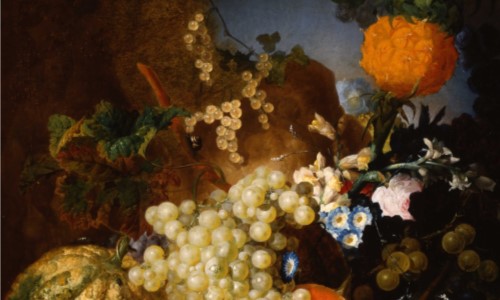
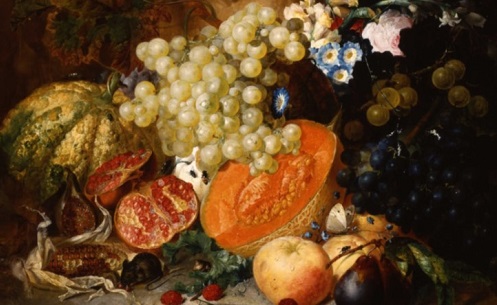
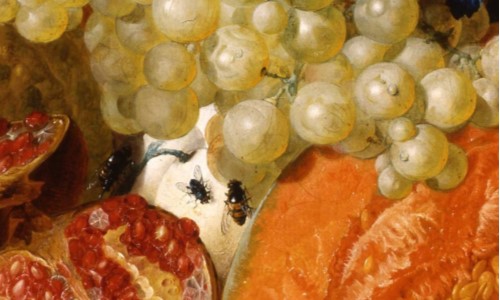
Take a closer look with Google Arts & Culture
Still-life painting began developing as a genre during the Renaissance and experienced its golden age in the 17th-century Netherlands, largely as an outgrowth of the Protestant Reformation. Protestants considered depictions of the saints and biblical scenes idolatrous, and preferred their churches to have plain white walls. Dutch painters could not rely on hefty commissions from church or state. Fortunately, painting was considered appropriate for decorative or didactic purposes in the home, and secular painting intended for both upper- and middle-classes flourished.
Van Os is that rare artist whose popularity has remained consistent since his own time. He is known for his use of color (often he uses a lighter-keyed palette than is represented in this piece) and unconventional compositions. Earlier examples of Dutch still-life painting are known for their highly-coded symbolism—usually alluding to subjects of mortality and moderation. By the time of van Os, when the Baroque began to give way to the Rococo sensibility, still-life painting was more overtly decorative and spectacular.
Although van Os, achieved fame and financial success at a relatively young age and his paintings are well-documented, relatively little is known about his personal life. He was born in Middleharnis in 1744, and died in The Hague in 1808. He began his career painting seascapes, and exhibited regularly in London from 1773 until his death. Van Os founded his own dynasty of painters—his sons, Pieter Gerardus and Georgieus Jacobus Johannes were both successful artists. His daughter Maria Margaretha van Os was also known for her fruit and flower paintings and his grandson Pieter Frederik van Os was known for his landscapes with horses and cattle.
The Frick piece is dated, which is rather rare in van Os’ oeuvre. You can see the signature and date at the center, beneath the marble plinth: J. Van Os Fecit 1769. Henry Clay Frick purchased the painting February 5, 1896. It is considered to be his first purchase of an “old master.” Prior to this, Frick’s collecting had been primarily focused on works of early 19th-century and contemporary American and European artists. It was hung in the breakfast room at Clayton with two other still-lifes (which remain in the house) in the early years of the twentieth century.
The Breakfast Room at Clayton. Photo courtesy The Frick Collection/Frick Art Reference Library Archives
Typically, van Os’ arrangements show little regard for natural laws of gravity or illumination. Some pieces of fruit appear weightless, and some areas of the composition are seemingly put in the spotlight, while others are left dark. And the arrangement itself appears to be in a most un-natural natural setting—there is sky in the upper right corner. What about those mysterious faces that hover along the left edge of the composition? They are likely to be figures on a bas-relief sculpture or vase, and are often depicted in the background of van Os’ works. Find the mouse, the butterfly, the snail, the water drops—it’s a visual delight. Van Os’ works were popular throughout northern Europe, and a piece like this would likely have hung in the dining room of a well-appointed private home as testament to a life lived comfortably.
Take a closer look with Google Arts & Culture

